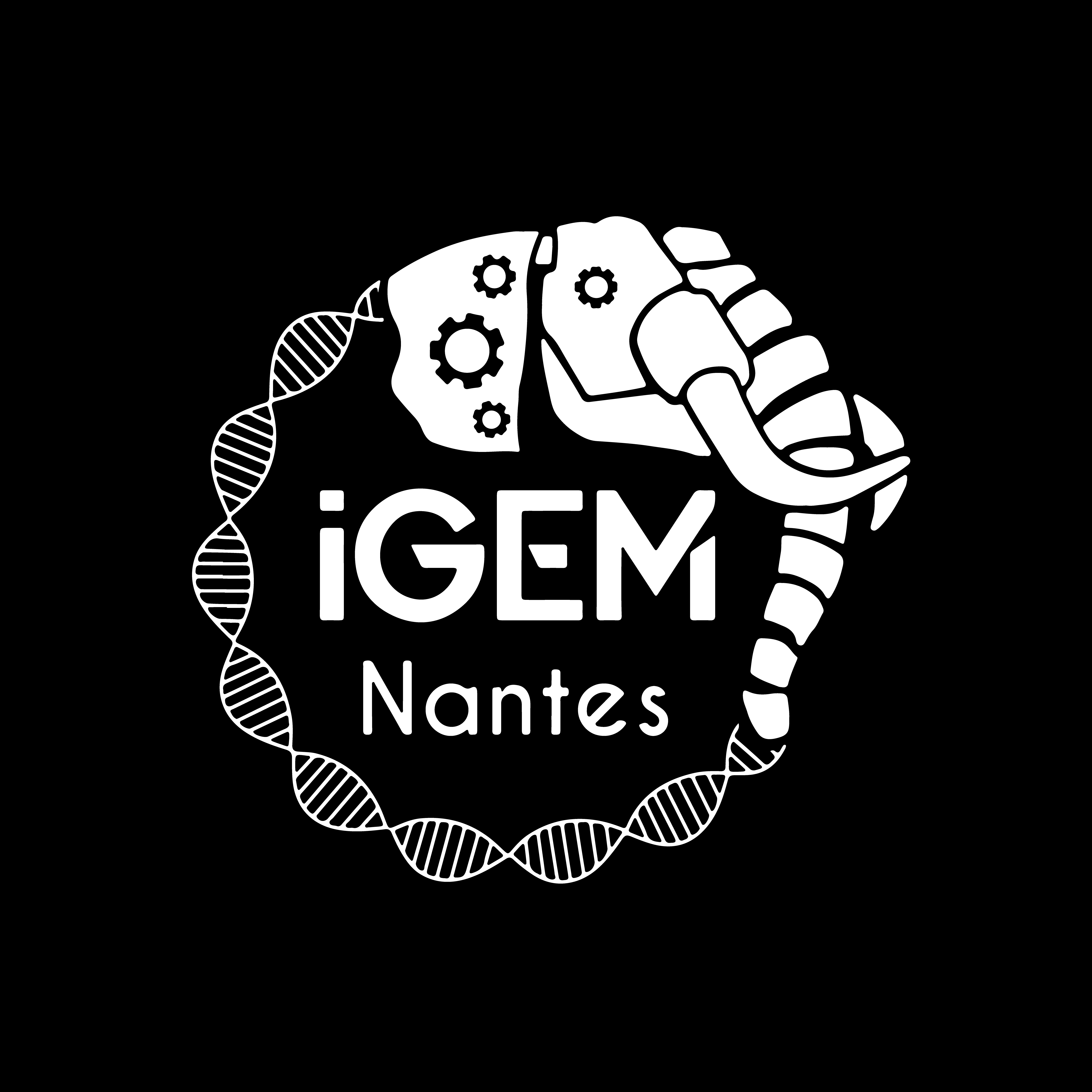iGEM Nantes 2020 iGEM
Team members
- Tiphaine Chapeau
- Arthur Charrier
- Jonathan Dheilly
- Christelle Ravonjiarivelo
- Sacha Guillet
- Vanessa Paris
- Axel Codault
- Caroline Le Gal
- Marie Esnard
- Natali Gospodinova
- Mylène Sorin
- Antoine Bochet
- Thomas Morand
- Camille Domenger
- Mehdi Kheroufi
- Valériane Thobie
- Antoine Guyot
Team Description
We are the proud successors of the first iGEM Nantes team in France. We are 17 passionate and highly motivated students ready to do anything in order to win the gold medal.
----- The A3 project -----
Green macroalgae (Ulva spp.) have been poisoning coast sides for decades. Rising temperatures and eutrophication of coastal waters due to nitrogen fertilizer pollution are mainly responsible for their proliferation. These green seaweed blooms are called “green tides”. This accumulation of algae affects many ecosystems in the north-west of France but also on a global scale. This phenomenon is getting more and more important each year and raises many health, economical and environmental concerns.
The significant accumulation of green macroalgae and their degradation cause the formation of anoxia zones, which leads to the production of hydrogen sulfide (H2S). In addition to causing asphyxiation of flora and fauna, this toxic gas can be fatal to humans after just a few minutes of inhalation. For several years now, this gas has been the cause of some animal and human casualties.
In fact, our team decided to promote green algae responsible for green tides on the coasts of French Brittany. Our project therefore revolves around the development of these algae in order to produce sulfuric acid, a compound known for its many industrial uses.
For this purpose, we will therefore put the algae collected in a bioreactor and accelerate their degradation by targeting the ulvan, a sulfated polysaccharide found in the wall of these algae (38% -54% of the dry weight of the ulvae). Thus, this degradation of the ulvan will allow the release of hydrogen sulfide in the bioreactor.
To achieve this objective, two groups of enzymes will be produced in an E. coli chassis. A group of enzymes composed of three degrading enzymes will allow an accelerated degradation of the ulvan. The second group of enzymes consists of sulfatases which will then promote the release of the sulfates attached to the ulvan. This will therefore allow the production of H2S. Then, from this released gas and by chemical conversion, sulfuric acid will be obtained in another compartment of the bioreactor.
Follow us on our Social Media for more information !
